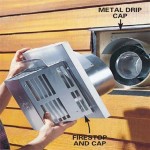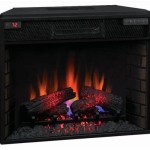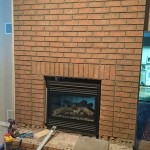The Enduring Elegance of Stone Fireplaces with Granite Mantels
A stone fireplace with a granite mantel represents a harmonious blend of natural beauty and enduring strength. The combination of rugged stonework and the sleek, sophisticated presence of granite creates a focal point that can elevate the aesthetic appeal of any living space. This architectural feature transcends mere functionality, becoming a statement of refined taste and a testament to the timeless allure of natural materials.
The enduring popularity of stone fireplaces stems from their ability to evoke a sense of warmth, comfort, and connection to the natural world. Stone, inherently varying in color, texture, and pattern, introduces a unique character to each fireplace, ensuring no two are exactly alike. When paired with a granite mantel, the overall effect is one of understated luxury and lasting value.
Granite, an igneous rock formed deep within the earth's crust, is renowned for its exceptional durability, resistance to heat, and captivating aesthetic qualities. Its crystalline structure reflects light in a way that enhances its natural beauty, while its inherent strength ensures it can withstand the rigors of daily use and the elevated temperatures associated with a fireplace.
The integration of a granite mantel within a stone fireplace design is more than a simple decorative addition; it is a carefully considered choice that enhances the overall aesthetic and functionality of the feature. The mantel serves as a visual anchor, providing a surface for displaying decorative items, photographs, or other personal treasures. It also offers a practical shelf for resting hot beverages or simply warming hands on a cold evening. The following sections will delve into key aspects of this design choice.
Aesthetic Considerations: Blending Stone and Granite
The aesthetic success of a stone fireplace with a granite mantel hinges on the careful selection of both the stone and the granite. The goal is to create a harmonious pairing where the textures and colors complement each other, rather than clash. Several factors must be considered during the selection process.
First, the color palette of the stone must be evaluated. Natural stone can range from light creams and beiges to deep browns, grays, and even blues and reds. The granite mantel should be chosen to either complement or contrast with these colors in a way that is visually appealing. For example, a light-colored limestone fireplace might pair well with a dark gray or black granite mantel, creating a striking contrast. Conversely, a brown fieldstone fireplace might be best complemented by a beige or cream-colored granite mantel, creating a more cohesive and natural look.
Second, the texture of both materials is important. Rough, irregular stonework can be beautifully juxtaposed with the smooth, polished surface of granite, creating a tactile and visual contrast that is both interesting and pleasing. Conversely, a more refined, uniform stone, such as cut sandstone, may be better paired with a granite that has a slightly textured finish, such as honed or leathered granite.
Third, the veining patterns in the granite should be considered. Granite often features intricate patterns of veins and mineral deposits that add to its unique beauty. These patterns can be subtle or dramatic, and the choice should be made based on the overall aesthetic goal. For a more understated look, a granite with subtle veining may be preferred. For a more dramatic statement, a granite with bold, contrasting veins can be chosen.
Furthermore, the style of the fireplace itself should influence the choice of both stone and granite. A rustic, traditional fireplace might be best suited to a rough-hewn stone and a simple, unadorned granite mantel. A more modern, contemporary fireplace might call for a sleek, minimalist stone design and a polished granite mantel with clean lines.
Ultimately, the aesthetic considerations involved in selecting the stone and granite for a fireplace are highly subjective and depend on the individual preferences of the homeowner. However, by carefully considering the color, texture, veining, and style of both materials, it is possible to create a fireplace that is both beautiful and harmonious.
Functional Aspects: Heat Resistance and Mantel Design
Beyond its aesthetic appeal, the combination of stone and granite in a fireplace offers several functional benefits. Granite's inherent heat resistance makes it an ideal material for a mantel, as it can withstand the high temperatures generated by a fire without damage or discoloration. The density and durability of granite also ensure that it can support significant weight, making it a practical surface for displaying decorative items.
The design of the mantel itself can significantly impact the functionality of the fireplace. The size and shape of the mantel should be carefully considered to ensure it provides adequate surface area for display while also complementing the overall design of the fireplace. The depth of the mantel is particularly important, as it determines how much protection it offers to the wall above from the heat of the fire.
A deeper mantel will provide more protection to the wall, preventing it from becoming scorched or discolored over time. However, a mantel that is too deep can appear bulky and overwhelm the fireplace. The ideal depth will depend on the size of the fireplace and the overall aesthetic goals. A general rule of thumb is to choose a mantel that is at least 6 to 8 inches deep.
In addition to the depth, the height of the mantel is also important. The mantel should be positioned at a height that is both comfortable and aesthetically pleasing. A mantel that is too low can feel cramped and uncomfortable, while a mantel that is too high can feel out of reach and disconnected from the fireplace. The ideal height will depend on the height of the fireplace and the overall proportions of the room. A general rule of thumb is to position the mantel at a height of between 48 and 54 inches above the floor.
The design of the mantel can also incorporate functional features such as shelving or storage compartments. These features can be particularly useful in smaller rooms where space is limited. A mantel with built-in shelving can provide a convenient place to store firewood, books, or other items. A mantel with hidden storage compartments can be used to conceal remote controls, wires, or other unsightly items.
Finally, the installation of the mantel should be done by a qualified professional to ensure it is securely attached to the fireplace and properly aligned. A poorly installed mantel can be a safety hazard and can detract from the overall aesthetic appeal of the fireplace.
Construction and Installation: Ensuring Longevity and Safety
The construction and installation of a stone fireplace with a granite mantel are critical aspects that determine its longevity, safety, and overall performance. The stonework, acting as the foundation and primary heat containment structure, must be meticulously constructed according to local building codes and best practices. The selection of mortar, the bonding agent between the stones, is paramount. Mortar must be heat-resistant, durable, and compatible with the type of stone used in the fireplace construction. Improper mortar selection can lead to cracking, crumbling, and ultimately, structural instability.
The installation of the firebox, the heart of the fireplace, requires careful attention to detail. The firebox must be adequately insulated to prevent heat from transferring to the surrounding combustible materials. This insulation typically involves the use of firebricks, a type of refractory brick specifically designed to withstand high temperatures without cracking or deteriorating. The firebox should also be properly sized to ensure efficient combustion and minimize the risk of smoke spillage.
The chimney, responsible for venting combustion gases safely out of the home, is another vital component. The chimney must be properly sized and constructed to ensure adequate draft. The chimney liner, a protective barrier inside the chimney flue, is essential for preventing corrosive gases from damaging the chimney structure. Chimney liners are typically made of stainless steel or clay tile, depending on the type of fuel burned in the fireplace.
The installation of the granite mantel requires precision and care. The mantel must be securely attached to the stone fireplace using appropriate anchoring techniques. The weight of the granite mantel must be supported by the stone structure, and the anchoring system must be capable of withstanding the combined weight of the mantel and any decorative items placed upon it. The mantel should be installed level and plumb to ensure a visually appealing and structurally sound result.
Furthermore, clearances from combustible materials must be strictly adhered to. The National Fire Protection Association (NFPA) provides guidelines for minimum clearances between fireplaces and combustible materials such as wood framing, drywall, and furniture. These clearances are designed to prevent fires from starting due to radiant heat from the fireplace. It is crucial to consult with a qualified building inspector or fireplace professional to ensure that all clearances are met during the installation process.
Regular maintenance is essential for ensuring the longevity and safety of a stone fireplace with a granite mantel. The chimney should be inspected annually by a qualified chimney sweep, who can identify and address any potential problems such as creosote buildup, cracks in the chimney liner, or loose mortar joints. The firebox should also be inspected regularly for cracks or damage. The granite mantel can be cleaned with mild soap and water to remove dust and grime. By following these guidelines, homeowners can ensure that their stone fireplace with a granite mantel remains a beautiful and functional centerpiece of their home for many years to come.

Stone Fireplace Surround Granite Mantel Tile Surrounds

9 Indoor Fireplaces That Will Bring Warmth And Charm To Your Home Swenson Granite 100 Natural Stones

How To Remove A Granite Stone Mantel Our Fireplace Four Generations One Roof Blog

How To Remove A Granite Stone Mantel Our Fireplace Four Generations One Roof Blog

Kv Granite Random Newcastle Hearth Mantel 1 K2 Stone

9 Indoor Fireplaces That Will Bring Warmth And Charm To Your Home Swenson Granite 100 Natural Stones

Acadia Fireplace Mantel Cornerstone Architectural S Llc

Granite Statue Fireplace Mantels With Electric For Indoor China Onyx Made In Com

The Acadia Fireplace New England Veneer Stone
Fireplace Hearth Stone Granite Baltic
Related Posts








